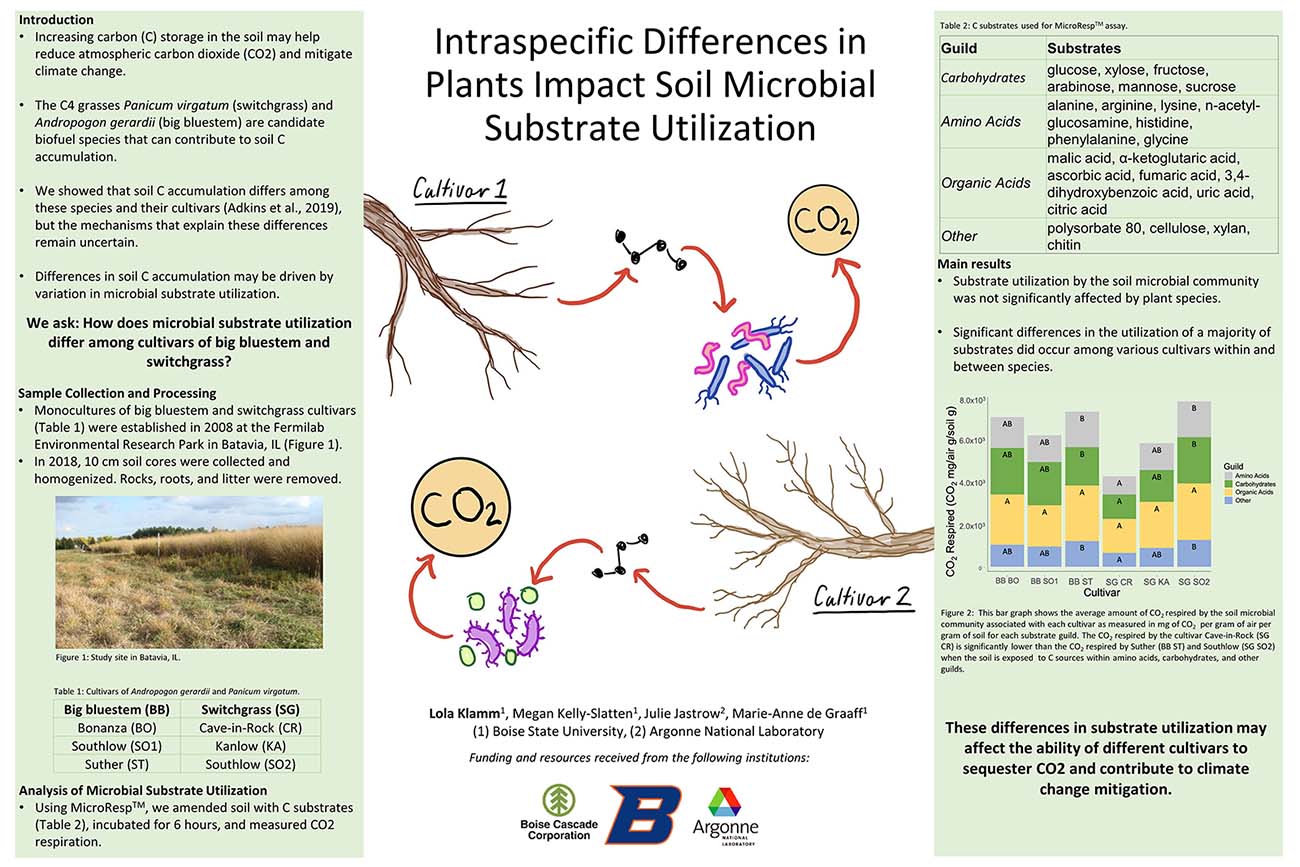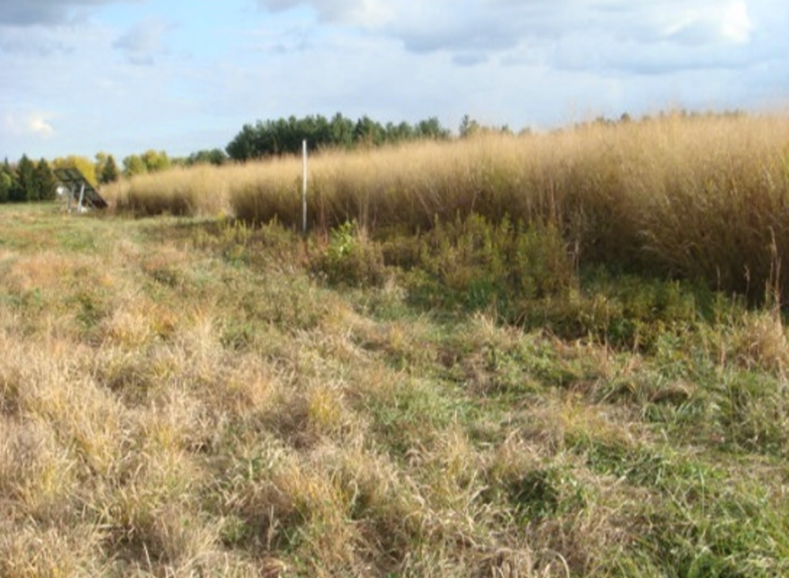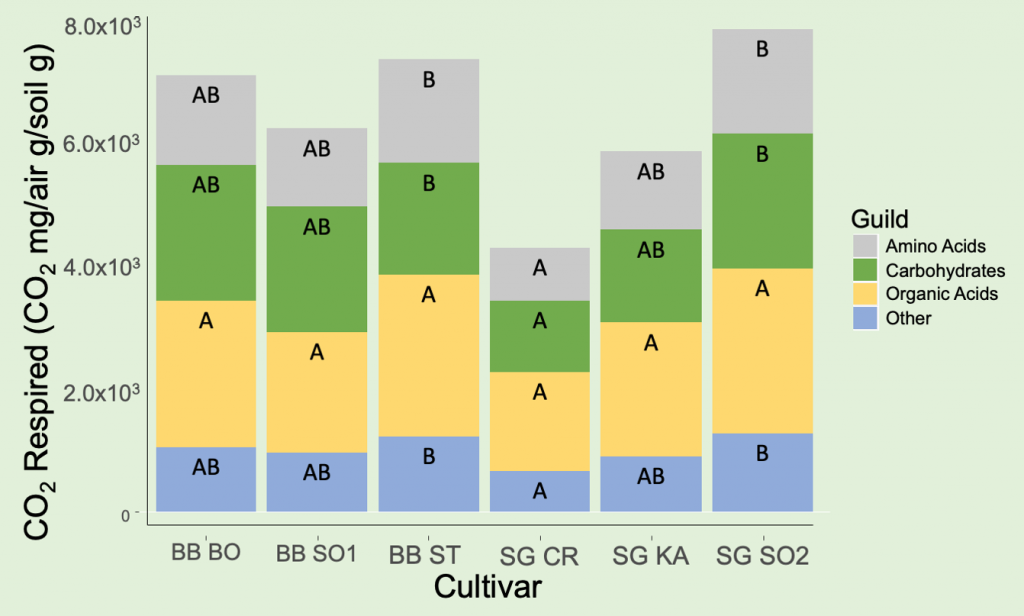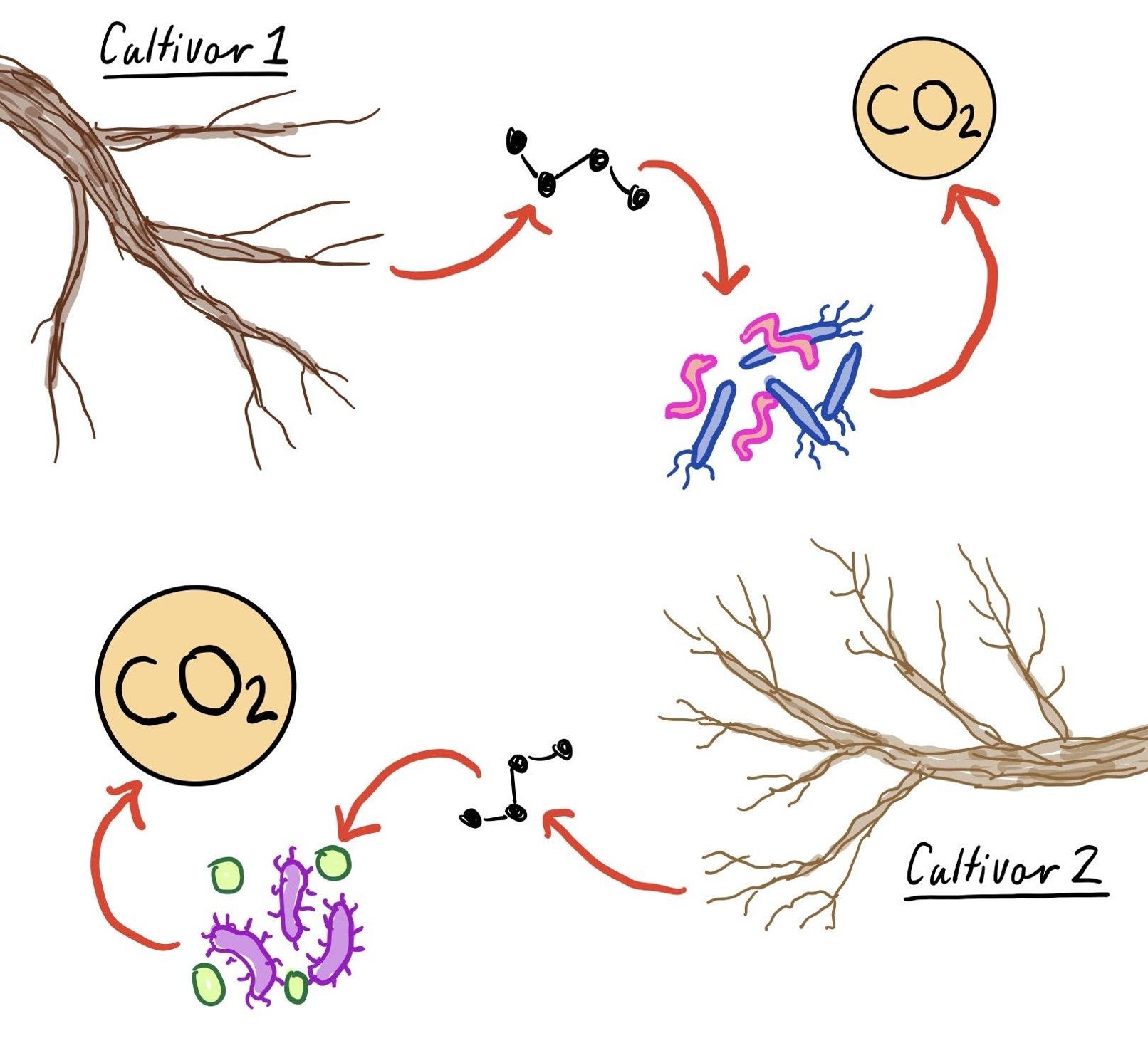Lola M. Klamm, Megan Kelly-Slatten, Dr. Julie Jastrow, Dr. Marie-Anne de Graaff

Introduction
- Increasing carbon (C) storage in the soil may help reduce atmospheric carbon dioxide (CO2) and mitigate climate change.
- The C4 grasses Panicum virgatum (switchgrass) and Andropogon gerardii (big bluestem) are candidate biofuel species that can contribute to soil C accumulation.
- We showed that soil C accumulation differs among these species and their cultivars (Adkins et al., 2019), but the mechanisms that explain these differences remain uncertain.
- Differences in soil C accumulation may be driven by variation in microbial substrate utilization.
We ask: How does microbial substrate utilization differ among cultivars of big bluestem and switchgrass?
Sample Collection and Processing
- Monocultures of big bluestem and switchgrass cultivars (Table 1) were established in 2008 at the Fermilab Environmental Research Park in Batavia, IL (Figure 1).
- In 2018, 10 cm soil cores were collected and homogenized. Rocks, roots, and litter were removed.

Table 1: Cultivars of Andropogon gerardii and Panicum virgatum.
| Big bluestem (BB) | Switchgrass (SG) |
|---|---|
| Bonanza (BO) | Cave-in-Rock (CR) |
| Southlow (SO1) | Kanlow (KA) |
| Suther (ST) | Southlow (SO2) |
Analysis of Microbial Substrate Utilization
Using MicroRespTM, we amended soil with C substrates (Table 2), incubated for 6 hours, and measured CO2 respiration.
Table 2: C substrates used for MicroRespTM assay
| Guild | Substrates |
|---|---|
| Carbohydrates | glucose, xylose, fructose, arabinose, mannose, sucrose |
| Amino Acids | alanine, arginine, lysine, n-acetyl-glucosamine, histidine, phenylalanine, glycine |
| Organic Acids | malic acid, ?-ketoglutaric acid, ascorbic acid, fumaric acid, 3,4-dihydroxybenzoic acid, uric acid, citric acid |
| Other | polysorbate 80, cellulose, xylan, chitin |
Main Results
- Substrate utilization by the soil microbial community was not significantly affected by plant species.
- Significant differences in the utilization of a majority of substrates did occur among various cultivars within and between species.

These differences in substrate utilization may affect the ability of different cultivars to sequester CO2 and contribute to climate change mitigation.

Funding and Resources
Funding and Resources received from the following institutions:
- Boise Cascade Corporation
- Boise State University
- Argonne National Laboratory
Additional Information
For questions or comments about this research, contact Lola Klamm at LolaKlamm@u.boisestate.edu.